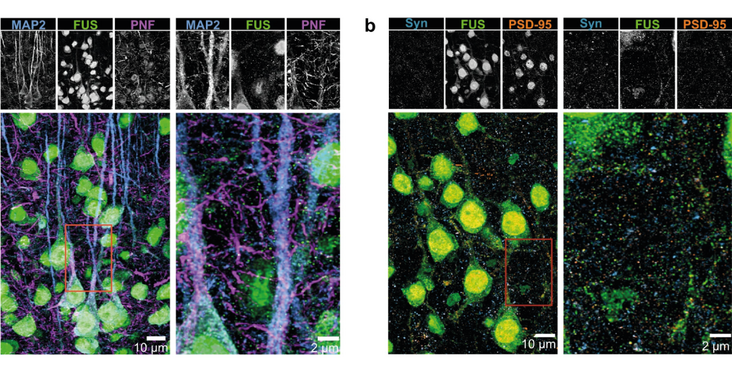Research on the role of FUS accumulation at synapses by the Polymenidou lab (DQBM, University of Zurich) has been published in an article in Nature Communications entitled "Synaptic FUS accumulation triggers early misregulation of synaptic RNAs in a mouse model of ALS ".
Abstract
Mutations disrupting the nuclear localization of the RNA-binding protein FUS characterize a subset of amyotrophic lateral sclerosis patients (ALS-FUS). FUS regulates nuclear RNAs, but its role at the synapse is poorly understood. Using super-resolution imaging we determined that the localization of FUS within synapses occurs predominantly near the vesicle reserve pool of presynaptic sites. Using CLIP-seq on synaptoneurosomes, we identified synaptic FUS RNA targets, encoding proteins associated with synapse organization and plasticity. Significant increase of synaptic FUS during early disease in a mouse model of ALS was accompanied by alterations in density and size of GABAergic synapses. mRNAs abnormally accumulated at the synapses of 6-month-old ALS-FUS mice were enriched for FUS targets and correlated with those depicting increased short-term mRNA stability via binding primarily on multiple exonic sites. Our study indicates that synaptic FUS accumulation in early disease leads to synaptic impairment, potentially representing an initial trigger of neurodegeneration.
Read the Publication in Nature Communications (Open Access)
Abstract, figure and title from Sahadevan, Hembach et al. (2021) Nature Communications published under a CC BY 4.0 license.
